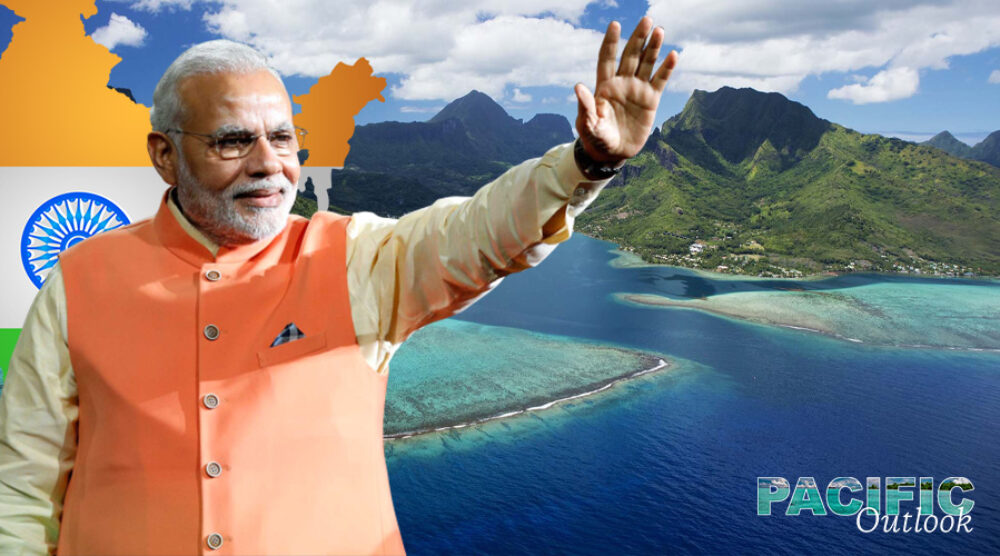IAN HALL |
In late September last year, on the sidelines of the United Nations General Assembly, Indian Prime Minister Narendra Modi devoted considerable effort to wooing the leaders of two regional groupings, one from the Pacific and the Caribbean.
The Forum for India-Pacific Islands Cooperation (FIPIC) and India-CARICOM (Caribbean Community) Island Summit leaders’ meetings are both new initiatives, brought into being by the Modi government since it first came to power in May 2014. They also have similar objectives. Both are designed to build India’s political influence with groupings of smaller states to further New Delhi’s diplomatic ambitions, at the UN and outside it. Put together, CARICOM and the Pacific island states involved in FIPIC represent 29 nations, some medium-sized, like Haiti (about 11m people) and Papua New Guinea (8.3m), and some very small, including Montserrat (less than 5000 people) and Tuvalu (11,000). They constitute significant voting blocs at the UN, with interests that increasingly converge with India’s own.
What New Delhi wants from the Pacific, in particular, is a mixture of things. Maintaining support for India’s long-standing objective of gaining a permanent seat on the UN Security Council is one of them. The twelve Pacific Island states engaged with FIPIC that can exercise vote have all pledged their support for that idea, and India wants to keep it that way. But New Delhi has other multilateral ambitions, not least in the area of climate change, for which it needs backing. It has been especially keen to promote the International Solar Alliance, one of Modi’s pet projects, which aims to encourage investment in solar power generation in developing counties throughout the tropics. To that end, the Indian Prime Minister offered Pacific states US$150m in concessional loans to develop renewable energy and climate change mitigation projects when he met their leaders last year.
At the same time, India wants other things from its Pacific partners. Its interests in Pacific natural resources and agricultural products – including liquefied natural gas (LNG), copper, sugar and sugar-based biofuels, and fish – are growing. The region is also important for India’s burgeoning space program, which New Delhi views as a major commercial opportunity for the country. The South Pacific is an ideal location for monitoring satellite launches from India, as its space agency demonstrated in 2013, when it kept track of the Mangalyaan Mars Orbiter mission from Fiji and ships in regional waters.
It is increasingly clear too that New Delhi sees the Pacific in broader, geopolitical terms, and is moving as best it can to shore up and enhance what influence it has, as China’s presence expands. For a country with only two embassies in the region – in Fiji and PNG – this is a challenge, but one that India is tackling in tried and tested ways it has employed elsewhere in the developing world. Aside from grants and loans, it has opened up its long-running, economical and apparently effective democracy assistance and development training programs to officials from the Pacific. It is now funding visitor programs for the region’s politicians and has waived visa fees for tourists from the region. It has launched a ‘Pan-Pacific Islands Project’ to help deliver educational and medical services over the internet, using as its model the ‘Pan-African e-Network’ India has rolled out across that continent since the mid-2000s. New Delhi has tasked India’s navy to conduct hydrological surveys for Pacific island states, as it has done in the Indian Ocean for Mauritius and the Seychelles, giving all a better understanding of the resources they might be able to exploit. And India is ‘flying the flag’, upping the regularity of high-level visits, including a recent trip to PNG by President Pranab Mukherjee.
Whether these various moves will pay dividends, as we enter a phase in which a number of major powers are taking a bigger interest in the region, is unclear. There are potential complications to enhanced engagement by India in the Pacific. An obvious one is over-stretch. New Delhi notoriously lacks diplomatic resources, given its tiny Foreign Service, and the Modi government seems to be facing something of a budget crunch, as lacklustre growth depresses tax revenues and expensive domestic welfare programs expand. It will struggle directly to compete with China, at least in terms of the scale of grants and loans.
India does however have some advantages in the region. The various instruments it is using to try to maintain and build its influence are ones that it has used before, often successfully. There are positive signs too that it is carefully calibrating its approaches to individual states, addressing needs that Pacific states themselves perceive, rather than seeking to impose projects that might not be wanted.
Professor Ian Hall is Deputy Director, Research at the Griffith Asia Insitute.








